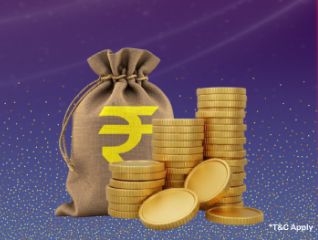Subsidies play an essential role in shaping economies and improving the quality of life for individuals. A subsidy is financial assistance provided by governments or organisations to help reduce costs, encourage specific activities, or achieve broader social and economic goals. For example, subsidies can make housing affordable, support farmers, or promote renewable energy adoption.
For first-time homebuyers, subsidies can significantly reduce the financial burden of owning a home. For instance, the Bajaj Finserv Home Loan offers a seamless experience for customers looking to benefit from government-backed interest subsidies under schemes like the Pradhan Mantri Awas Yojana (PMAY). By combining such subsidies with features like flexible tenures of up to 32 years and loan amounts of up to Rs. 15 crore, Bajaj Finserv Home Loans make homeownership more accessible.
In this article, let us explore the concept of subsidies, their types, categories, and the benefits they offer.
Types of subsidies
Subsidies come in different forms, each tailored to meet specific needs. Here are the most common types of subsidies:
- Direct subsidies: These involve direct payments or financial aid to individuals or organisations. For example, government grants for affordable housing or agricultural support schemes.
- Indirect subsidies: These reduce costs indirectly, such as tax breaks, reduced utility bills, or lower interest rates on loans.
- Cash subsidies: These are direct cash transfers to beneficiaries to help them cover specific expenses. For instance, subsidies for cooking gas under the Direct Benefit Transfer (DBT) scheme.
- Tax subsidies: These involve reductions in taxes to encourage certain activities, such as tax holidays for startups or exemptions for renewable energy projects.
- Interest subsidies: These reduce the interest rates on loans, making borrowing more affordable. For example, the PMAY scheme offers interest subsidies for home loans to eligible beneficiaries.
- Cross-subsidies: In this type, one group pays more to subsidise another group. For example, higher electricity tariffs for industrial users may subsidise lower rates for residential users.
Each type of subsidy serves a unique purpose, ensuring that financial support reaches individuals or sectors that need it the most.
Categories of subsidies in India
Subsidies in India are broadly classified into three categories:
1. Social subsidies
These subsidies aim to improve the quality of life and support disadvantaged sections of society. Examples include:
- Food subsidies under the Public Distribution System (PDS).
- Housing subsidies under PMAY.
- Education subsidies for economically weaker sections.
2. Economic subsidies
These are designed to support economic activities and promote growth. Examples include:
- Subsidies for small and medium enterprises (SMEs).
- Tax incentives for startups.
- Export subsidies to promote international trade.
3. Sectoral subsidies
These focus on specific sectors to boost their development. Examples include:
- Agricultural subsidies such as fertiliser and seed subsidies.
- Renewable energy subsidies to encourage the use of solar and wind energy.
- Industrial subsidies to promote manufacturing in specific regions.
These categories ensure that subsidies address a wide range of social, economic, and sectoral needs, contributing to the nation’s overall development.
Benefits of subsidies
Subsidies offer a range of advantages that benefit individuals, businesses, and the economy as a whole. Below are some key benefits:
- Promote affordability: Subsidies make essential goods and services, such as housing, food, and education, more affordable for the masses.
- Encourage economic activities: By reducing costs, subsidies incentivise businesses to invest in specific sectors, such as renewable energy or manufacturing.
- Support vulnerable populations: Subsidies provide financial relief to economically weaker sections, ensuring social equity.
- Boost employment: By encouraging investment in industries and infrastructure, subsidies create job opportunities.
- Promote sustainable development: Renewable energy subsidies encourage the adoption of eco-friendly technologies, reducing carbon footprints.
- Enhance competitiveness: Export subsidies help businesses compete in international markets by reducing costs.
- Encourage homeownership: Housing subsidies, such as those under PMAY, make it easier for individuals to own homes by reducing loan interest rates.
Subsidies play a crucial role in achieving social and economic objectives, making them a vital tool for governments and organisations.
Challenges and future of subsidies
While subsidies offer numerous benefits, they also come with challenges. Here are some key challenges and their potential solutions:
Challenges:
- Economic burden: Subsidies can strain government finances, leading to budget deficits.
- Misuse and inefficiency: In some cases, subsidies may not reach the intended beneficiaries due to inefficiencies or corruption.
- Market distortion: Excessive subsidies can disrupt market dynamics, discouraging competition.
- Environmental concerns: Certain subsidies, such as those for fossil fuels, can harm the environment.
Future outlook:
- Targeted subsidies: Governments are increasingly focusing on targeted subsidies to ensure that benefits reach the right people.
- Digital platforms: The use of technology, such as Direct Benefit Transfers (DBT), ensures transparency and reduces leakage.
- Sustainable subsidies: Emphasis is being placed on subsidies that promote renewable energy and sustainable development.
- Periodic reviews: Regular evaluations of subsidy schemes can help identify inefficiencies and make improvements.
By addressing these challenges, subsidies can continue to play a vital role in achieving social and economic goals.
Subsidy on home loans
Home loan subsidies, such as those offered under the PMAY scheme, are designed to make housing more affordable for individuals. These subsidies reduce the interest rates on home loans, significantly lowering monthly EMIs.
For example, eligible beneficiaries under the PMAY scheme can avail of an interest subsidy of up to Rs. 2.67 lakh. This can be combined with the flexible features of Bajaj Finserv Home Loans, such as loan amounts of up to Rs. 15 crore and tenures of up to 32 years. Additionally, Bajaj Finserv offers tools like the Home Loan EMI Calculator to help you plan your monthly payments effectively.
By leveraging home loan subsidies, you can make your dream of owning a home a reality while enjoying reduced financial stress. Get started by entering your mobile number and OTP to check your home loan offer instantly.
PMAY-U 2.0: Interest Subsidy Scheme (ISS)
The Pradhan Mantri Awas Yojana – Urban (PMAY-U) 2.0 aims to provide affordable housing to all by 2022. Under the Interest Subsidy Scheme (ISS), eligible beneficiaries can avail of interest subsidies on housing loans.
Key features:
- Target beneficiaries: Economically Weaker Sections (EWS), Low-Income Groups (LIG), and Middle-Income Groups (MIG).
- Interest subsidy: Up to Rs. 2.67 lakh, depending on income and loan amount.
- Eligibility: The applicant or their family should not own a pucca house in India.
With Bajaj Finserv Home Loans, you can seamlessly apply for PMAY benefits and enjoy additional features such as online document submission and quick approvals.
How does a home loan subsidy work?
Home loan subsidies, like those under the PMAY scheme, work by reducing the interest rate on your loan. Here is how it works:
- Eligibility check: Ensure you meet the income and property criteria under the PMAY scheme.
- Loan application: Apply for a home loan with a lender like Bajaj Finserv and mention your intent to avail of the subsidy.
- Interest subsidy: Once approved, the subsidy amount is credited to your loan account, reducing the principal amount.
- Lower EMIs: With a reduced principal amount, your monthly EMIs become more affordable.
- Flexible features: Combine the subsidy with Bajaj Finserv’s flexible home loan features, such as tenures of up to 32 years, for added convenience.
By understanding how home loan subsidies work, you can make an informed decision and maximise your savings.
PMAY 2025: Who Can Apply and How to Avail Home Loan Subsidy Online
The Pradhan Mantri Awas Yojana (PMAY) 2025 helps first-time homebuyers afford their dream home by offering interest subsidies on home loans. The scheme primarily benefits eligible individuals in the EWS, LIG, and MIG I income groups.
Eligibility Criteria
- Income: EWS up to ₹3 lakh, LIG ₹3–6 lakh, MIG I ₹6–12 lakh.
- Property Ownership: Applicants or family members should not own a ‘pucca’ house anywhere in India.
- Mandatory Documents: Aadhaar, income proof, property papers, and declaration form.
- Priority: Women applicants or joint ownership in a woman’s name.
Loan Limits and Subsidy Rates
| Income Group | Maximum Loan Eligible | Interest Subsidy Rate | Maximum Subsidy |
|---|---|---|---|
| EWS | ₹6 lakh | 6.5% | ₹2.67 lakh |
| LIG | ₹6 lakh | 6.5% | ₹2.67 lakh |
| MIG I | ₹9 lakh | 4% | ₹2.35 lakh |
How to Apply Online
Visit the PMAY Urban portal, check eligibility, select a registered lender, submit documents, and the subsidy is credited directly to your home loan account, reducing EMI. The scheme is open until 31 December 2025.
Conclusion
Subsidies are a powerful tool to address social and economic challenges, making essential goods and services more accessible. From housing and education to renewable energy and agriculture, subsidies play a pivotal role in improving lives and promoting sustainable development.
For homebuyers, schemes like PMAY provide significant financial relief by reducing the cost of home loans. By choosing Bajaj Finserv Home Loans, you can combine the benefits of government subsidies with features like high loan amounts, flexible tenures, and quick approvals.
Take the first step towards your dream home today. Apply online for a Bajaj Finserv Home Loan and enjoy the benefits of interest subsidies, flexible repayment options, and a hassle-free application process.
















